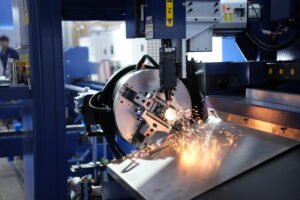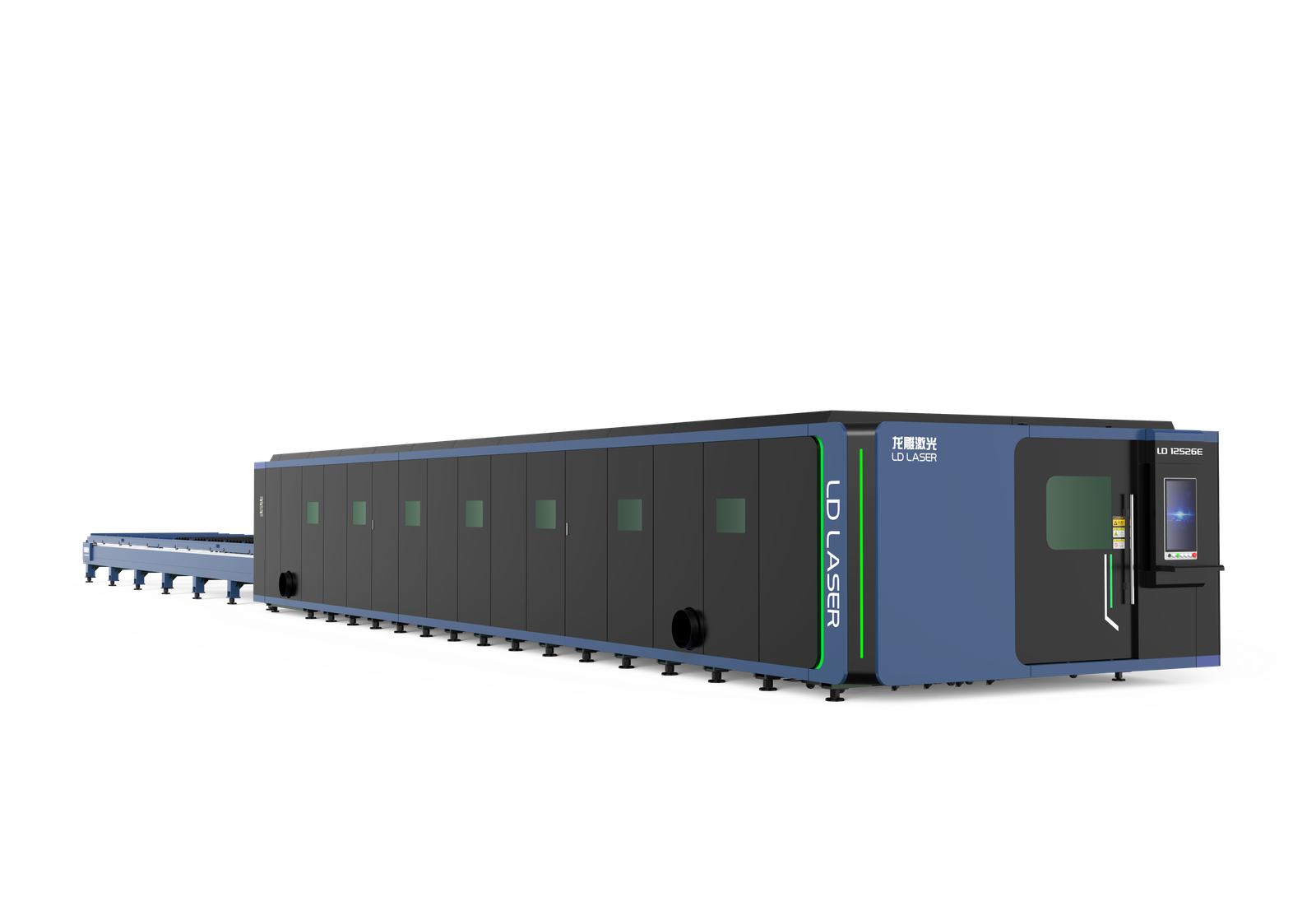When ABC Manufacturing upgraded from their outdated CO2 tube laser to a modern fiber system, they doubled their output while reducing operating costs by 40%. You’ll face similar decisions when selecting a tube laser cutting machine, as today’s market offers diverse options with varying specifications and capabilities. Understanding the technical requirements, automation potential, and ROI metrics will determine whether your investment becomes a competitive advantage or a costly miscalculation.
Key Takeaways
Assess your required cutting capabilities including maximum tube dimensions, material types, and thickness ranges to match production needs.
Compare power source options between 1kW to 6kW based on your throughput requirements and material processing demands.
Evaluate automation features like material loading systems and software integration to optimize operational efficiency and reduce labor costs.
Calculate total cost of ownership including initial investment, operational expenses, maintenance requirements, and potential return on investment.
Review machine specifications for positioning accuracy, beam quality, and cutting speeds to ensure quality standards meet customer expectations.
Understanding Key Specifications and Performance Metrics
When selecting a tube laser cutting machine, understanding the key technical specifications and performance metrics is essential for making an informed investment decision. You’ll need to evaluate cutting speed capabilities across different material types and thicknesses, typically measured in meters per minute. The machine’s beam quality, expressed as BPP (Beam Parameter Product), directly impacts precision and edge quality.
Consider maximum tube dimensions, including diameter and length capacity, along with the rotary axis specifications. You’ll want to analyze the power source wattage, ranging typically from 1kW to 6kW, and its impact on throughput. Other significant metrics include positioning accuracy, repeatability tolerances, and acceleration rates. Don’t overlook the assist gas pressure requirements and the cutting head’s focal length options, as these affect both performance and operating costs.
Material Processing Capabilities and Limitations
The material compatibility range of tube laser cutting machines directly impacts their operational versatility and ROI potential. You’ll need to evaluate whether your machine can handle the specific tube types you’re processing, including steel, aluminum, copper, and brass variants. Most systems can cut material thickness ranging from 0.5mm to 12mm, though this varies by material composition.
Consider that stainless steel typically requires higher power settings and slower cutting speeds compared to mild steel, while aluminum demands specialized parameters to prevent material distortion. Your machine’s wattage will determine its ability to process thicker materials efficiently. Some advanced systems offer automatic material detection and parameter adjustment, helping you optimize cutting performance across different tube types while minimizing setup time and reducing material waste.
Automation Features and Software Integration Options
Modern tube laser cutting systems extend beyond material processing capabilities through advanced automation and software integration features. You’ll find that today’s machines offer automated material loading/unloading systems, robotic part handling, and intelligent nesting algorithms that optimize material usage.
When evaluating laser automation options, consider systems that provide seamless integration with your existing CAD/CAM software. Look for machines offering extensive software compatibility with industry-standard file formats like STEP, IGES, and DXF. Your system should include real-time monitoring capabilities, predictive maintenance alerts, and remote operation features through IoT connectivity.
Key automation features to assess include automatic focus control, cutting parameter optimization, and integrated quality inspection systems. These elements guarantee consistent output while minimizing operator intervention and reducing production bottlenecks.
Cost Analysis and Return on Investment
Investing in a tube laser cutting machine requires careful financial analysis across multiple cost factors. Your budget considerations must account for both initial capital expenditure and ongoing operational expenses. Through detailed financial forecasting, you’ll need to calculate your expected ROI based on production volume, labor savings, and market demand.
- Calculate power consumption costs by analyzing the machine’s specifications and your facility’s energy rates
- Measure material savings through reduced waste and improved cutting precision
- Determine labor cost reduction by comparing manual versus automated processing times
- Project maintenance expenses based on service intervals and replacement part costs
To maximize your investment return, analyze your production requirements against machine capabilities. Compare maintenance contracts, training programs, and software licensing fees. Factor in potential revenue increases from improved product quality and faster turnaround times.
Maintenance Requirements and Service Support
Maintaining ideal performance of tube laser cutting machines requires systematic preventive maintenance protocols and reliable service support infrastructure. You’ll need to establish daily, weekly, and monthly maintenance schedules that include lens cleaning, assist gas system checks, and beam alignment verification.
Your preventive maintenance program should track key performance metrics like cutting accuracy, gas consumption, and beam quality. Consider implementing automated monitoring systems to detect potential issues before they cause downtime. When selecting a machine, evaluate the manufacturer’s service contracts, including response times, spare parts availability, and technical support coverage.
You’ll want to guarantee your maintenance team receives proper training and certification from the manufacturer. Document all maintenance activities and create standardized procedures for troubleshooting common issues to minimize production disruptions and extend machine longevity.
Space Considerations and Facility Requirements
You’ll need to thoroughly assess your facility’s layout to accommodate both the tube laser system and material handling requirements, with most industrial installations requiring at least 800-1200 square feet of dedicated floor space. Your facility must meet specific power requirements, typically 480V three-phase electrical service with 100-150 amp capacity for most mid-range tube laser systems. Proper ventilation infrastructure is essential, requiring both makeup air systems and fume extraction equipment rated at 2000-3000 CFM to handle metal cutting emissions.
Floor Layout Requirements
Before finalizing your tube laser cutting machine purchase, carefully assess your facility’s spatial requirements to accommodate both the equipment and its operational workflow. Floor space optimization requires strategic placement of loading zones, material storage areas, and maintenance access points. You’ll need to take into account layout flexibility to guarantee efficient material handling and workflow patterns.
- Allow minimum clearance of 3-4 feet around all sides of the machine for operator access and maintenance
- Designate specific zones for raw material storage, guaranteeing a 30-foot buffer for incoming tube bundles
- Plan for automated loading/unloading systems with 20-foot margins at both ends
- Create dedicated areas for finished product staging, incorporating adequate aisle width for forklift maneuverability
Ponder future expansion possibilities when mapping out your floor plan to maximize operational efficiency and minimize material handling bottlenecks.
Power and Ventilation Specs
Proper power and ventilation infrastructure forms the foundation for excellent tube laser cutting performance. You’ll need to guarantee your facility can handle the machine’s power rating, typically ranging from 2kW to 6kW for industrial tube lasers. Most systems require 480V three-phase power with dedicated circuit breakers rated at 100-200 amps.
Your ventilation requirements must account for both fume extraction and cooling systems. Install a dedicated exhaust system capable of removing 1,000-2,000 cubic feet per minute of air, depending on your machine’s size. The cooling system needs separate ventilation considerations, as it generates significant heat during operation. Plan for adequate makeup air to maintain suitable pressure balance in your facility. Consider installing monitoring systems to track air quality and maintain efficient operating conditions for both your equipment and operators.
Conclusion
Studies show that automated tube laser cutting machines can reduce material waste by up to 35% compared to manual cutting methods. When you’re selecting your machine, you’ll need to evaluate the complete system integration capabilities, focusing on throughput metrics and operational efficiency. By aligning power specifications, material compatibility, and automation features with your production requirements, you’ll maximize your investment’s long-term value and operational effectiveness.

